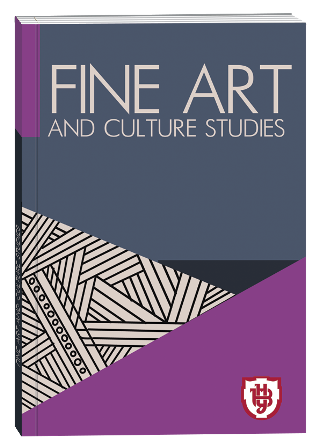RITUAL ASPECT OF BODILY AND DANCE PRACTICES
DOI:
https://doi.org/10.32782/facs-2022-6-10Keywords:
dance, bodily practices, ritual, body, communicationAbstract
Contemporary choreography, in search of modern forms and adequate meanings, turns to archaic dance practices not only in the context of their research and stage reproduction, but as a living experience of the transformation of human consciousness and corporeality, the foundations of personal development, the creation of a conscious space of essential communication, in the context of a quality rethinking of social existence of individuals and even their status on the planetary level. The purpose of the article lies in cultural conceptualisation of the ritual nature of dance and its transformation in contemporary bodily practices. Scientific novelty. Dance and bodily-dance practices are considered in the context of their ritual-communicative essence. The idea that dance in modern somatic-dance studies displays the ability to be an important moment not only of specific body-oriented therapies, but also a complex and integral tool of human development in the modern world is presented. Technological civilization, existential crises, the actualization of the archaic experience of mankind provide reasons for a qualitatively new understanding of choreography, highlighting its rehabilitative and therapeutic functions in the broadest philosophical and cultural context. Dance is explored as a ritual, as a certain cosmological tool of a holistic worldview, as sacred communication (at the level of nature, another person/society, the cosmos, the Absolute, the Self). In the conclusion it is noted that the study of the ritual-communicative nature of dance and its archaic sacred forms in the modern context involve the transformation of ideas about human corporeality as a static and closed structure. Instead, the ideas of movement of the body as a method of self-awareness, integrity experiencing, spiritual-physical unity of the individual and full interaction with the surrounding world in the state of "embodiment" are offered.
References
Blackmer J. D. Acrobats of the Gods: Dance and Transformation. Toronto: Inner City Books, 1989.
Fraleigh S. H. Dance and the lived body: A descriptive aesthetics. University of Pittsburgh Press. 1987.
H’Doubler M. Dance: A creative art experience. The University of Wisconsin Press, 1940.
Halprin A. Moving towards life: five decades of transformational dance. Wesleyan University Press, 1995.
Hawkins A. M. Creating through dance. Prentice-Hall, Inc., 1964.
Hawkins A.M. Moving from within: a new method for dance making. Chicago, IL: A Cappella Books, Incorporated, 1991.
Kurnaedy K. M. Uncovering the essence of what animates us beneath the dance: investigating the lived experiences of bodily perceptions generated while dancing : doctoral dissertation. 2013. 277 p. URL: https://summit.sfu.ca/item/12890 (date of access: 17.12.2021).
Lewitsky B. (Interview by Yvonne McClung). In Why move? A conversation about dance with Bella Lewitzky. San Francisco : Chandler & Sharp Publishers, Inc. 1975.
Martin J. John Martin’s book of the dance. New York : Tudor Publishing Company, 1963.
Press C., Warburton, E. C. Creativity research in dance. Bresler L. (Ed.) International handbook of research in arts education. Part Two. Vol. 16. Springer, 2007.
Sachs C. World history of the dance. New York : W. W. Norton & company, inc, 1937. 469 p.
Stewart I. J. Sacred woman, sacred dance: awakening spirituality through movement and ritual. Rochester, Vt : Inner Traditions, 2000. 246 p.







